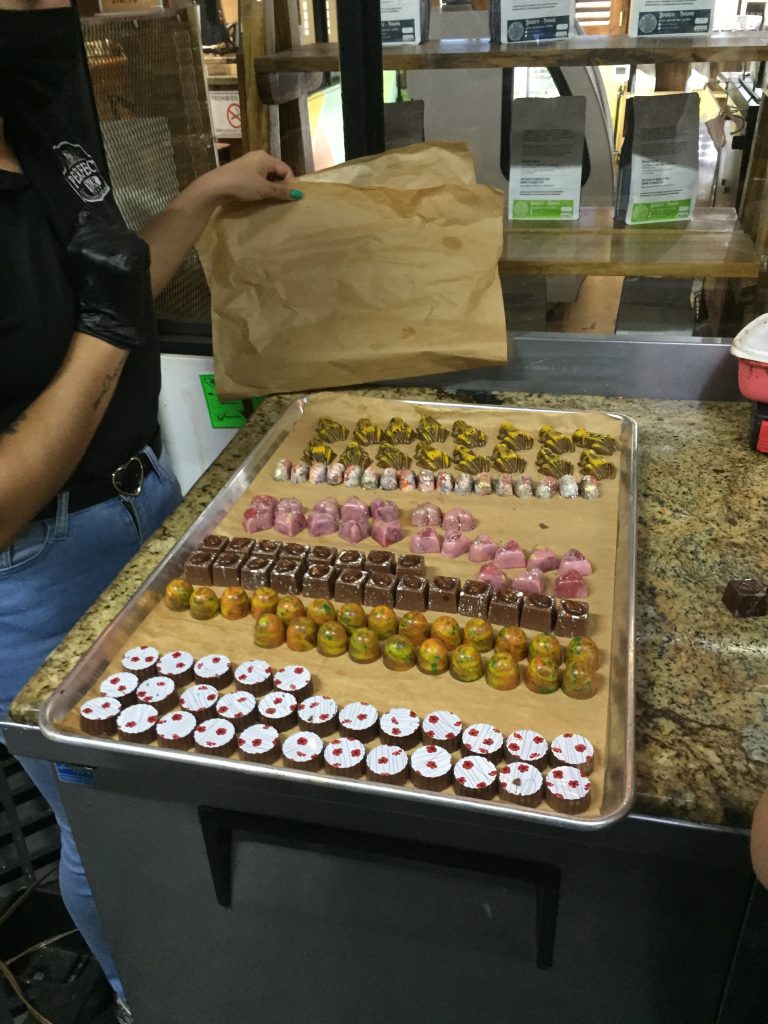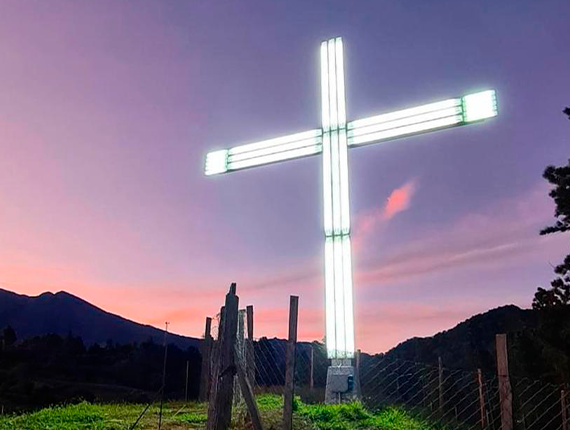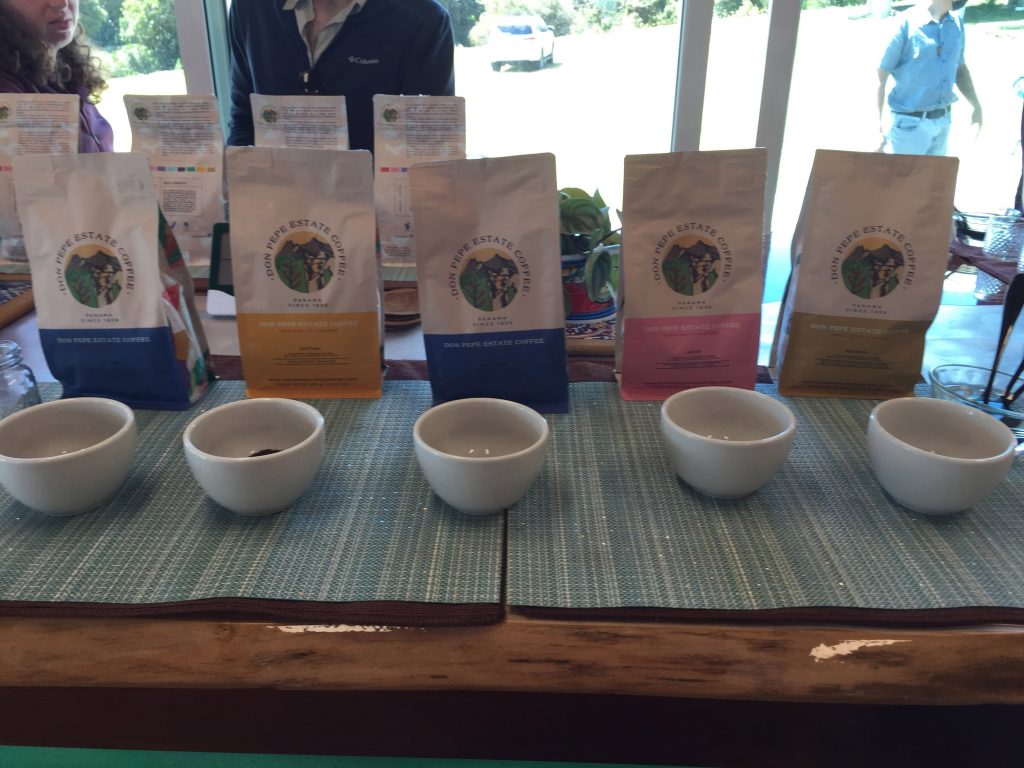Last Saturday, a fantastic fundraising event for Dog Camp (a prominent local charity focusing on rescuing, rehabilitating, and rehoming dogs) was held – the Boquete Private Garden Tour. Three gardens were selected to participate in the tour, and the 45 attendees were transported by three charter busses. At each stop on the tour, there was delicious food and boutique shopping. A video compilation produced by one of the photographers on the tour can be viewed here.

The food was beautifully presented, and the volunteers who assembled the plates operated like a well-oiled machine.

My friend Kathleen leading one of the tour groups through her lovely garden.
The garden of one of my friends was featured on the tour, and I was honored that she invited me to be one of the vendors. I had neglected my polymer clay efforts for most of the past three years, because I had been working remotely all that time and felt like I couldn’t devote the time and attention to it. However, I am no longer working, so when this invitation was extended, I couldn’t say no. This is another example of the synchronicities that have appeared in my life:
- Someone told a friend of mine that she had some polymer clay she wanted to give away, as she had too many other hobbies and needed the room. So my friend put her in touch with me, and gave me probably 20 pounds of clay, two pasta machines, and a Cuisinart food processor used to chop up and recondition hard clay.
- I had recently met someone at a restaurant, and we became friends on Facebook. I saw a post where she mentioned that she hadn’t been able to work with her clay recently, so my ears perked up and I asked her what kind of clay she was talking about, and found that indeed, it was polymer clay! So we have had a couple of clay play-days since then, and she is becoming a real-life friend.
- And finally, after telling my friend Kathleen about these “coincidences”, she invited me to be a vendor at the garden tour, which came at the perfect time.
With all of these seemingly unrelated incidents (but were they, really?), it seemed undeniable that the universe was prompting me to re-visit my polymer clay efforts. So I switched gears and got busy making items during the several weeks before the tour – ink pens, keyrings, earrings, and necklaces.

My display table at the garden tour.
I enjoyed meeting the guests – that was my favorite thing when I did craft shows in Oklahoma, and I must say that sales were good, too! I also handed out flyers saying that I was going to start hosting polymer clay classes, which interested quite a few people. It seems residents in Boquete are always looking for new and different things to experience – there have been painting classes, chocolate-making tours, coffee tours, salsa dance lessons, mosaic workshops, and any number of other participatory creative or cultural events.
All in all, the garden tour was a rousing success, and they raised more than $3,100 to support Dog Camp. Kudos to all who volunteered!




























